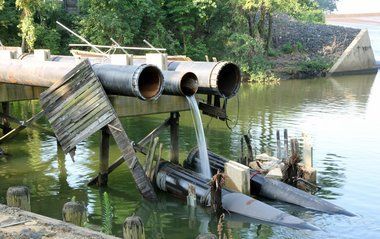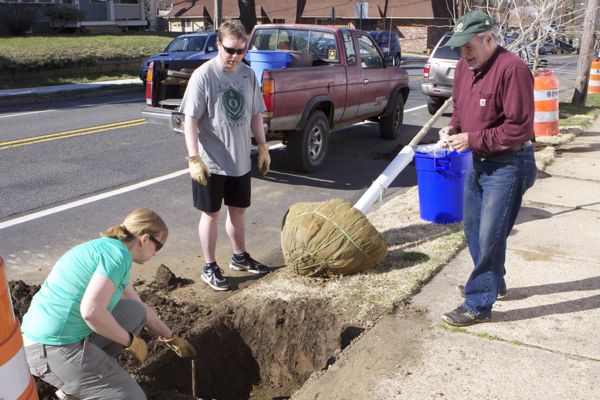A Different View of Fenimore Streams Is Revealing
Roxbury Residents Sold Out and Misled
Latest news on the Fenimore landfill fiasco is that the local politicians have bowed to Gov. Christie and now support the DEP’s closure plan. The support of local politicians comes over their residents’ strong objections and demands to “truck it out”, see:
That sell out story is no surprise here, because I always knew Jim Rilee and the Fenimore Fools were unprincipled cowards who would never defy Gov. Christie and would sell out their residents to maintain loyalty to Gov. Christie.
But, in reading the news story, I decided to hit the link and read what I thought was the Township’s independent consultant’s Report.
Right off the bat, I questioned the consultant’s independence, given their prior solid waste work, relationship with DEP, and state “LSRP” license – all that gives them financial incentives not to rock the boat, retain viability as a consultant, and not alienate or limit access to DEP. And curiously, the Report was addressed to and prepared for Mr. Bucco, not the Township, so I will call it the “Bucco report”.
I had no time this morning to read the “Bucco Report” in detail, so I scrolled through the table of contents and saw something about streams. I’ve seen the streams there so was interested in what the Report said about them.
The “Bucco Report” says this about the nearby streams that are impacted by the landfill:
Two streams flow around the landfill property. One stream flows downhill in an easterly direction south of the landfill, and the other stream flows downhill in a southeasterly direction north of the landfill. These two streams converge outside of the landfill property to the east and form a tributary of Drakes Brook (see Appendix I for a detailed report). Sampling of these streams as recent as March 2013 did not show any impacts from the landfill; see Figure 12 for a map of sample locations. As mentioned before, a program to sample these streams as well as existing groundwater monitoring wells on a regular basis should be developed and implemented as part of any closure option.
Having walked the landfill perimeter on October 15, 2011 and seen the streams with my own eyes (and camera) and having some knowledge of the health of NJ’s streams and the impacts of landfills on streams, I found that statement very hard to believe. No impacts on those streams from the landfill? No impacts from the upstream development? What?
When I toured the site, I saw leachate breakout from the landfill slope flowing into streams, various solid waste disposed in streams, and significant stream bank erosion caused by storm water runoff from the landfill (and upstream development).
All these observations strongly suggest chemical, biological and physical water quality impairment.
So, I stopped reading the Bucco Report and scrolled to Figure 12 and Appendix I to look at the sampling locations and the so called “detailed report”, including sampling methodology, and water quality and biological monitoring data.
There are longstanding DEP approved water quality assessment methods and tools to assess water quality so that DEP can determine “impairment” and compliance with Clean Water Act standards. Did the “detailed report” follow these technical protocols?
No.
Figure 12 shows the location of 3 sample sites, which don’t look like they are located in streams. No data or methods are provided.
Appendix I does not provide any “detailed report” on the streams or any analysis of the impact of the landfill on the water quality or ecological health of the streams.
Appendix I is an extremely narrow and misleading rebuttal of a straw man argument (i.e. whether “SEP deposited waste on an existing stream that flowed across the surface of the landfill”. Here is the stated objective of Appendix I – it certainly is not a “detailed report and does not even attempt consider water quality impacts of the landfill, as clearly implied in the text of the Report. Here is the objective of Appendix I:
This report has been prepared in order to document our findings of the location of the Fenimore Landfill with respect to existing streams. The assessment was initiated in order to explore the validity of comments made by a Roxbury resident (Carlos Robert Mederos) that SEP deposited waste on an existing stream that flowed across the surface of Fenimore Landfill (the Landfill). It is our understanding that this statement was made based on personal knowledge that the SEP landfilling operation was in part upon an existing stream. The individual did not have any evidence to that effect and we conducted an investigation to assess the validity of his statement.
So what the Report did on the stream issue practically amounts to a lie. I hope that is not an indication of the credibility of the rest of the report, but I am not optimistic in that regard.
Along with the incomplete and highly misleading text of the Bucco Report on streams, I found even more misleading photos. Go look at the stream photos in that Report, and compare them with my own photos below (all shot on 10/15/11):











